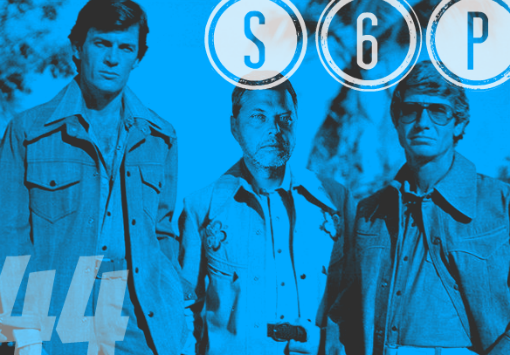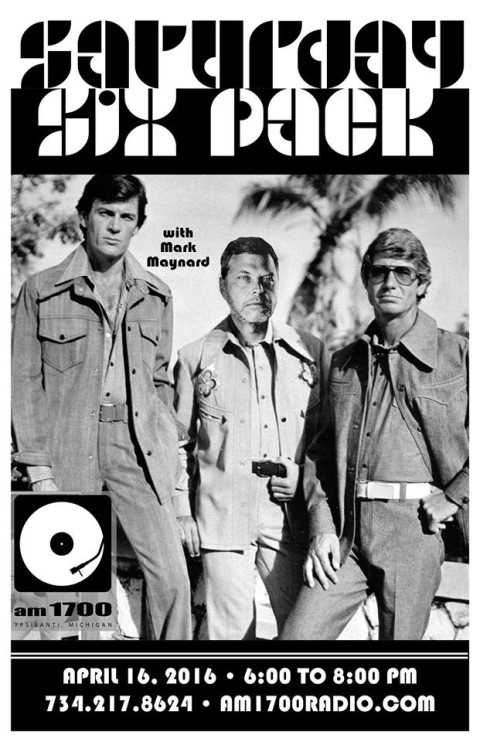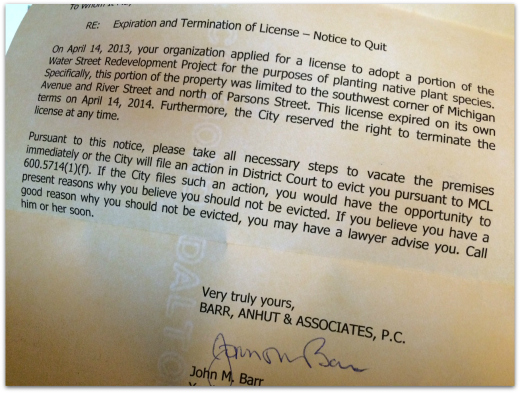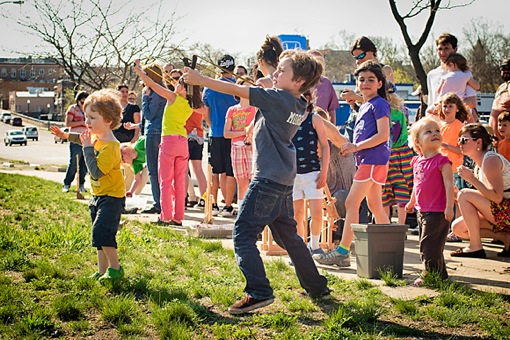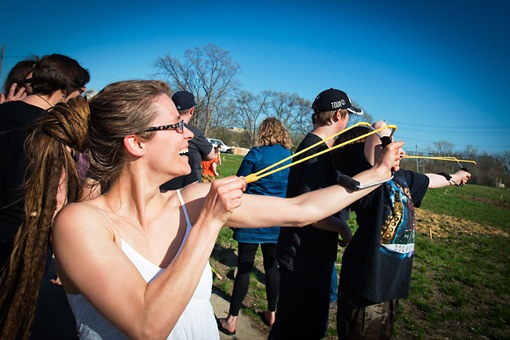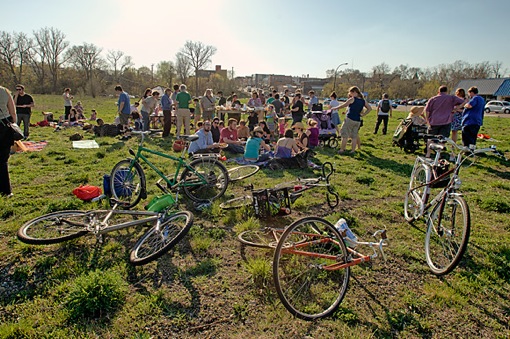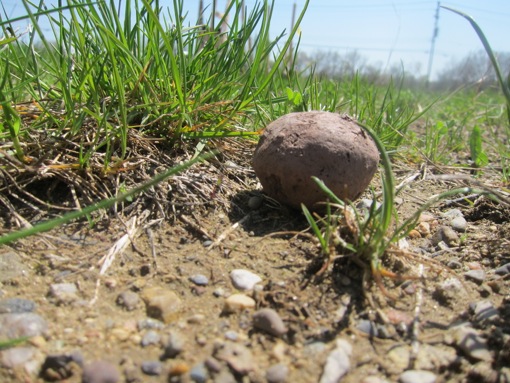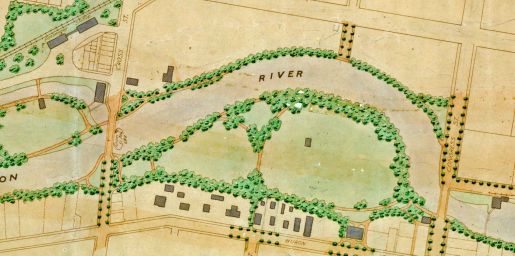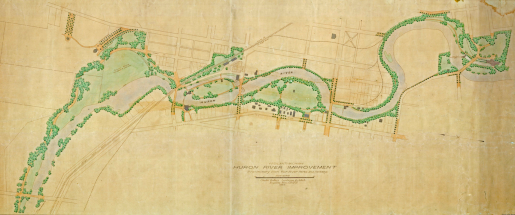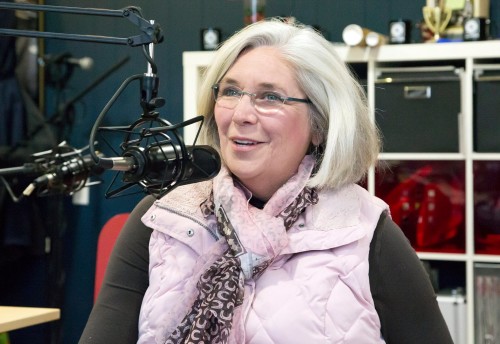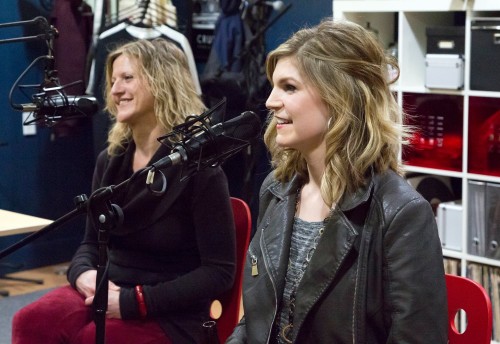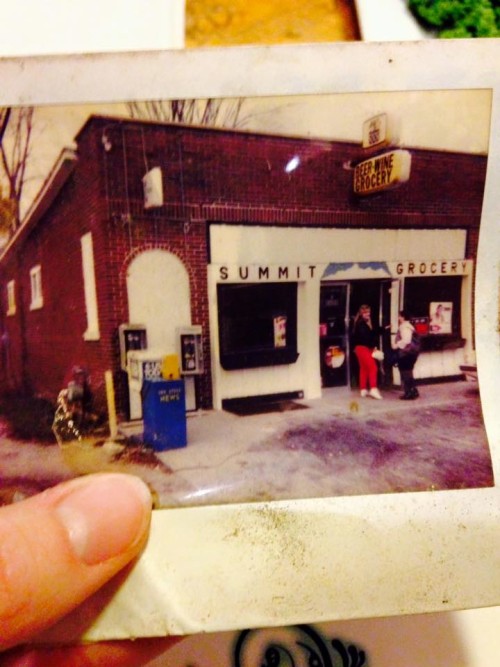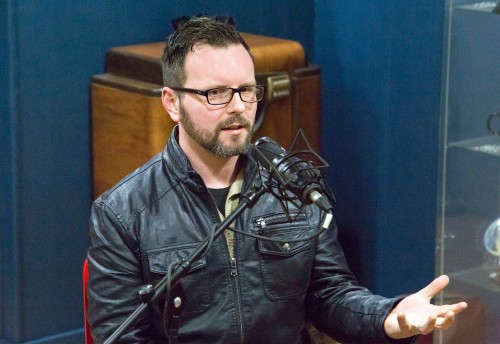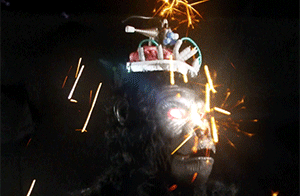I got word a few days ago through my network of informants that a young woman by the name of Kayla Mishler might be planning to pack up and leave Ypsilanti, so I headed out to find her. Here’s her official exit interview. I hope you enjoy it.

MARK: So I’ve heard a rumor that you intend to leave Ypsilanti?
KAYLA: Yep!
MARK: How long have you been here?
KAYLA: I was born in Ypsilanti. My mother moved to Ann Arbor when I was seven years old. My father stayed here.
MARK: What kind of kid were you?
KAYLA: Quiet.
MARK: Is that still the case? And, if not, when did you stop being quiet?
KAYLA: It’s not completely different. I do speak up when it comes to things that I care about, or when I feel like I can either contribute or learn something.
MARK: And what is it that you care about?
KAYLA: Babies. Brains. Behavior. Social work stuff.
MARK: How’d you get interested in social work?
KAYLA: I don’t know. It’s just always been something that I’ve wanted to do.
MARK: So there wasn’t a meaningful interaction with a social worker at some point along the line?
KAYLA: No, I never had any interaction with a social worker until I was in undergrad studying to be one. I just knew that I wanted to work in this space, and that being a psychologist would be too limiting, in that it wouldn’t allow me to meet people where they’re at. They (not all but most, don’t jump on my back) tend to limit their interactions to inside the office, between the hours of 9:00 AM and 5:00 PM. I like the idea of meeting clients where they’re at, the social and environmental systems they live in, and creating treatments from there.
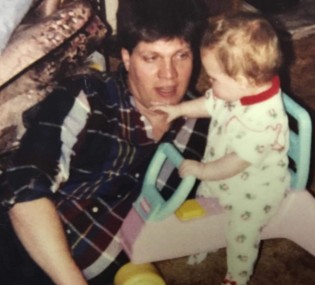 MARK: How are you most like your dad?
MARK: How are you most like your dad?
KAYLA: My father liked to ask a lot of questions, see the world from multiple viewpoints, and make decisions based on logic. I think I’m like that to a certain extent, although I’m still growing.
MARK: How are you least like your mom?
KAYLA: My Mother is creative and artsy. I can barely color inside the lines.
MARK: And where is it that you’ll be moving to?
KAYLA: Chicago.
MARK: Can I ask why?
KAYLA: I’ve been accepted to the University of Chicago.
MARK: To do what?
KAYLA: I’ll be in the Social Service Administration graduate program.
MARK: I know, based on earlier conversations, that you’ve been in Michigan your entire adult life, but has all of that been in Ypsi, or have you moved around?
KAYLA: As an adult, I’ve bounced between Ypsilanti and Ann Arbor for housing. It seems like, for every two years I’d live in Ypsilanti, I’d move to Ann Arbor for one. Then I’d make my pilgrimage back home. Last year I lived in Kerrytown and loved every moment of it, but I still had to come back. It’s like a right or return, right?
MARK: What, if anything, do you anticipate that you’ll miss about Ypsilanti when you’re in Chicago?
KAYLA: My social network. I’ll miss living on Washington Street. It’s the prettiest little street. I’ll miss the brick sidewalk, and the fact that I was landlocked by three churches whenever I walked outside of my front door. And Beezy’s coffee is my blood. I also love the professional network I’ve built for myself, and the education I’ve received. Oh, and Dalat, Thai Thai, and Macheko.
MARK: What is it that you’ve been doing for a living here?
KAYLA: All social work stuff, with unfortunate bouts of waiting tables. Most recently, I worked at a substance use disorder clinic. I quit when I found out I’d be moving. Prior to that, I was a Behavior Specialist and Crisis Interventionist at Lincoln schools. That was by far the most challenging and amazing job I’ve ever had.
MARK: Why amazing?
KAYLA: Elementary school kids! They have so much humor and kindness in them. It makes the uneasy parts of their lives more easy to endure.
MARK: Tell us about the humor.
KAYLA: Well, when you’re working with a kid who is having an emotional melt down over the shapes of the chicken nuggets, you have to remind yourself, “Good lord, this is over chicken nuggets.” That’s funny, right?
MARK: And what won’t you miss about Ypsilanti?
 KAYLA: My social network… Not really, but I am excited to live in a new state, where I don’t really know anyone. It’ll make it easier to focus on my master’s, and my PhD, which I hope to have by 2020. And I want to see if I can be as successful as a mental health worker in a larger city. Have you ever tried to get work done at the Ugly Mug? When you know everyone and can’t catch a moment to yourself. You’re happy because you love everyone, but you really can’t get anything done. I was accepted at the University of Michigan and Boston University, but I chose the University of Chicago in part for that reason. It’s close enough to come home, but far enough away to focus… I also struggle to understand the Boston accent.
KAYLA: My social network… Not really, but I am excited to live in a new state, where I don’t really know anyone. It’ll make it easier to focus on my master’s, and my PhD, which I hope to have by 2020. And I want to see if I can be as successful as a mental health worker in a larger city. Have you ever tried to get work done at the Ugly Mug? When you know everyone and can’t catch a moment to yourself. You’re happy because you love everyone, but you really can’t get anything done. I was accepted at the University of Michigan and Boston University, but I chose the University of Chicago in part for that reason. It’s close enough to come home, but far enough away to focus… I also struggle to understand the Boston accent.
MARK: How has Ypsilanti changed over the time that you’ve been here?
KAYLA: That’s a great question. I should preface my answer by saying that I’m still in my 20’s, so it’s likely that views aren’t yet fully developed… With that said, I think there’s more of an appetite for community involvement on the part of students at EMU. Maybe there’s more of a willingness on the part of students today to connect, or maybe it’s always existed and I just haven’t noticed it. It seems like it’s more sustainable now, though. In the past, programs would start, but they would inherently lack stamina because the founders would graduate in four or five years and things would wither… Oh, and the food is getting better. Man, I like food.
MARK: So your sense is that the sense of community is growing?
KAYLA: I do believe that to be true. I think that the independent groups that have been started by young folks have led to an increase in public awareness. They’re asking people to be a part of their community, to take responsibility for making positive change themselves. People seem to know that they have the capacity within themselves to make an impact, if that’s what they want.
MARK: What’s your first memory of Ypsilanti?
KAYLA: My first memory would be getting really sick in what used to be the Farmer Jack grocery store near Maus and Grove.
MARK: Did they let you use the bathroom?
KAYLA: No, I barfed all over the avocados. My dad had to buy a handful… I also remember getting food at Hawkins Place, which is either gone now, or has new ownership.
MARK: The soul food place? What do you remember about it?
KAYLA: I remember you walked into a thin, narrow lobby and ordered food through a red wood window. My Father would let me give the order even though I couldn’t see beyond the low window sill. I don’t remember the food in particular, but I do remember not liking catfish… And I remember going to games and events at Candy Cane Park.
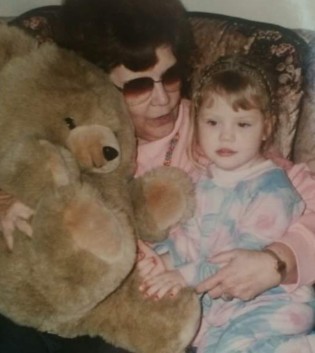 MARK: What kinds of games and events at Candy Cane Park?
MARK: What kinds of games and events at Candy Cane Park?
KAYLA: Little league games. My brother was on a team.
MARK: Did your brother leave Ypsilanti?
KAYLA: Yes, he actually lives in Chicago too!
MARK: What’s the strangest thing you’ve ever seen in Ypsilanti?
KAYLA: A person taking a shit in a KFC bucket at the bus stop. I wish this was a lie.
MARK: You mentioned earlier that you don’t have any artistic aptitude, but would you like to try drawing this for us… unless, of course, you have a photo…
KAYLA: I am sure we can try to get some security footage. Unfortunately Go Pro’s weren’t a thing back then, so we missed that boat.
MARK: And what’s the most beautiful thing you’ve ever seen here?
KAYLA: Aesthetically? I think that Washington Street is really beautiful. The same goes for some of the areas down by the river that are somewhat more remote. It’s a small city with beautiful urban and natural bits and pieces… Oh, and I like the dog park that’s near Platt and Eisenhower, even though I do not have a dog. I really like that we have one nearby.
MARK: When you eventually meet people in Chicago, and they ask where you’re from, how will you describe Ypsilanti?
KAYLA: I’d describe Ypsi as a small, diverse city. I’d say that I appreciate that it’s not swimming with chain restaurants or attractions. I’d say that I appreciate that it’s surrounded by other cities that are completely different.
MARK: OK, you told us how you Ypsi has changed. How about Ann Arbor?
KAYLA: The price has gone up, and the charm has gone down. I still like some of their places for food though.
MARK: Do you intend to ever come back and visit, or are you leaving with the intention of never turning back? Are you completely closing this chapter of your life?
KAYLA: I do plan on coming back during my academic run. My significant other lives in Ypsilanti, my friends are still here, my stepfather. So I’ll be back during academic breaks. And I’m sure I’ll come back for the lavender trees and Beer Fest. And I may return once I have my degree. I’ll apply for employment in both Ypsilanti/Ann Arbor and Chicago and see which one is a better bite.
MARK: When I was first introduced to you online, your name was Kayla Johnson. Is that an alias?
KAYLA: Yes, my last name is Mishler. I changed my social media last name to Johnson in 2012 or 2013. I’ve worked clients that struggle to know boundaries. I’m not trying to live a double life. I’m actually not that interesting. And I correct people if they ask. I’m also fully aware that it’s 2016, and if someone wants to find me on the internet, my god, they have the means.
MARK: You wrote to me once about heroin, right?
KAYLA: I did. I suggested that you might want to devote a radio segment to it. I spoke too soon, though. I hadn’t yet gotten permission from my supervisors, and they weren’t enthusiastic about it. (I can’t wait to be my own boss.) My idea was to have myself, or someone who works at the clinic, and a person who is currently in recovery discuss stigma, lack of resources, federal limitations, the idealized guaranteed of never relapsing, and how family members can feel the weight of addiction. While I don’t think that most of your listeners have addiction issues, we all know someone who is facing addiction. The idea died internally when I mentioned that the program was called the “Saturday Six Pack.” One of my co-workers didn’t think that aligned well with the subject of recovery. I disagreed, but the idea died. I think it would be great to have that conversation on-air. If it were to happen, though, it would have to be an independent, non-affiliated discussion.
MARK: Well, if you have people that you’d suggest I talk with, just let me know. It’s a subject that I’d like to invest some time in.
KAYLA: I am sure I could pull some people together.
MARK: Any parting words for those of us who will remain here in Ypsi? Any words of wisdom?
KAYLA: Wisdom to share? I am thankful for all the wisdom that Ypsilanti has shared with me.
MARK: What’s the most important thing you learned from Ypsilanti?
KAYLA: It’s my favorite little microcosm. Ypsilanti is where, as a young kid and a growing adult, I shaped my views on diversity, poverty, humility, humor, and whatever modeling you can think of. Ypsilanti is where I learned about positive change.
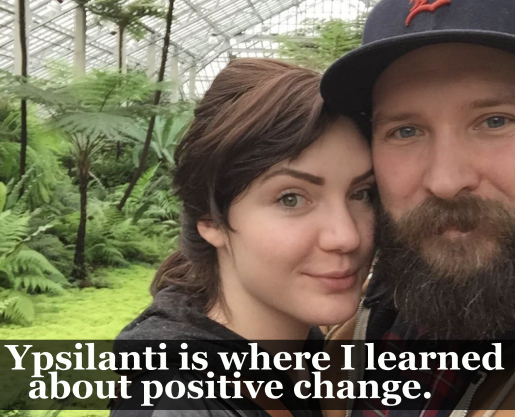
[Curious as to why people are leaving this place we call home? Check out the Ypsi/Arbor Exit Interview archive.]

